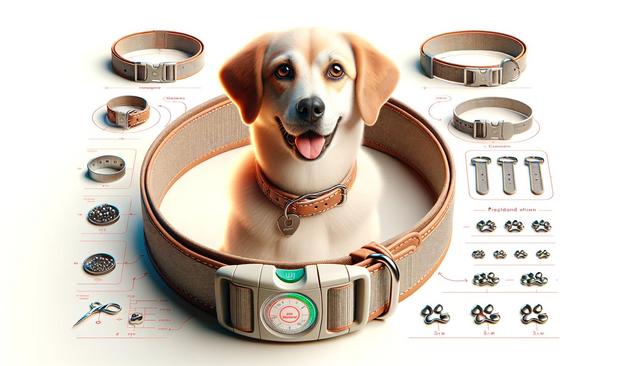
What to Know About Using a Flea Collar for Dogs
Understanding How Flea Collars Work
Flea collars for dogs are designed to release active ingredients that repel or kill fleas upon contact. These ingredients are either spread through the dog’s skin and fur or create a protective layer around the neck area. Some collars use chemical-based insecticides, while others may incorporate natural repellents like essential oils. The mode of action can vary depending on the specific product, but the ultimate goal is to interrupt the flea life cycle and prevent re-infestation. When choosing a flea collar, it’s important to understand whether it offers repellent, insecticidal, or dual-action protection.
One of the key advantages of flea collars is their long-lasting protection, often ranging from several weeks to several months. This makes them a low-maintenance option for pet owners who prefer not to apply monthly spot treatments. However, effectiveness can vary depending on the dog’s activity level, coat type, and exposure to water or sunlight. Always read the product instructions to ensure optimal use and safety for your pet.
Benefits of Using a Flea Collar
There are several benefits to using a flea collar for dogs, especially when it comes to convenience and longevity. Unlike topical treatments that need reapplication every few weeks, many collars offer extended protection without frequent maintenance. This can be particularly useful for busy dog owners who want consistent coverage with minimal effort.
Some common advantages include:
- Long-term flea prevention (up to 8 months for some products)
- Ease of use—simply fasten it around your dog’s neck
- Less mess compared to topical treatments
- Availability in various sizes and formulations
In addition to flea protection, some collars also help repel ticks and other parasites. This can be especially beneficial if your dog spends a lot of time outdoors or in areas where tick exposure is common. However, it’s essential to monitor your pet for any signs of skin irritation or allergic reactions, which can occasionally occur with certain collar ingredients.
What to Consider Before Choosing a Flea Collar
Not all flea collars are the same, and it’s important to consider several factors before making a selection. First, check the label to ensure the collar is appropriate for your dog’s age, weight, and health condition. Puppies, pregnant dogs, or those with sensitive skin may require specific product types or formulations.
Key factors to evaluate include:
- Active ingredients: Chemical vs. natural options
- Duration of effectiveness
- Water resistance
- Size and adjustability of the collar
- Safety certifications and user reviews
If your dog has previously reacted to flea treatments, consult your veterinarian before trying a new collar. It’s also a good idea to monitor your pet during the first few days of use to ensure there are no adverse effects.
Combining Flea Collars with Other Preventive Measures
While flea collars can be an effective part of a parasite control strategy, they are often more successful when combined with other preventive measures. Fleas can live in the environment as well as on your pet, so treating your home and yard is equally important. Use flea sprays, powders, or foggers to eliminate eggs and larvae from carpets, furniture, and outdoor spaces.
Additional preventive steps include:
- Regular grooming and combing with a flea comb
- Frequent washing of pet bedding and toys
- Vacuuming carpets and upholstery weekly
- Limiting your dog’s exposure to infested environments
Integrating these practices with the use of a flea collar can enhance overall effectiveness and reduce the chances of reinfestation. Keep in mind that no single method offers complete protection, so a multi-layered approach often works best.
Safety Tips for Using Flea Collars
Using a flea collar safely is crucial to protecting your dog’s health. Always follow the manufacturer’s instructions regarding fitting and duration of use. A collar that is too tight can cause discomfort, while one that’s too loose may not work effectively. As a general rule, you should be able to fit two fingers comfortably between the collar and your dog’s neck.
Other safety recommendations include:
- Removing the collar during bathing or swimming if not water-resistant
- Storing unused collars in a sealed container away from children and pets
- Washing your hands after handling the collar
- Monitoring for side effects like excessive scratching, lethargy, or skin redness
If you notice any unusual symptoms, remove the collar immediately and consult a veterinarian. Some dogs may be more sensitive to certain ingredients, making it important to choose a product suited to your pet’s needs and health profile.
Conclusion: Is a Flea Collar Right for Your Dog?
A flea collar for dogs can be a valuable tool in maintaining your pet’s health and comfort, especially when used as part of a broader flea prevention plan. With various options available—including chemical and natural formulations—it’s possible to find a collar that aligns with your dog’s specific needs. Consider factors like effectiveness, safety, and lifestyle when selecting a product. For long-term protection with minimal maintenance, flea collars offer a practical and often cost-effective solution. Always consult with a veterinarian if you’re unsure about the right choice for your pet, particularly if they have underlying health conditions or a history of skin sensitivity.